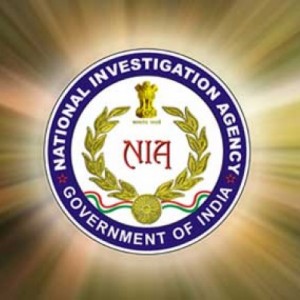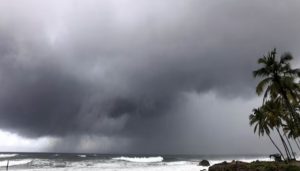Main Points from MH Economic Survey on Environment 2021-22

Mumbai, 11th March 2022:
Rainfall in State
The State received 118.2 per cent of the normal rainfall during monsoon 2021. In the State, 187 talukas received excess rainfall, 146 received normal rainfall and 22 received deficient rainfall
Decrease in Crop Production
During kharif season of 2021-22, sowing was completed on 155.15 lakh ha area. The production of cereals, pulses, oilseeds, cotton and sugarcane is expected to decrease by 11 per cent, 27 per cent, 13 per cent, 30 per cent and 0.4 per cent respectively of the previous year (can check climate change attribution for this)
Impact of Extreme Weather Events
During March to May 2021, about 0.91 lakh ha agriculture area in 31 districts was affected by untimely rains, hailstorms & cyclones, for which a compensation of ` Rs. 122.26 crore was sanctioned. During May, 2021 about 0.17 lakh ha agriculture area in 17 districts was affected by Tauktae cyclone for which a compensation of ` 72.35 crore was sanctioned. During July, 2021 about 4.43 lakh ha agriculture area was affected in 24 districts due to heavy rainfall & flood for which a compensation of ` 365.67 crore was sanctioned. During August to September, 2021 due to excessive rains/flood the agriculture area affected was about 48.38 lakh ha in 28 districts for which a compensation of ` 3,766.35 crore was sanctioned Compensation for Livestock & Fishers due to extreme weather. The State has sanctioned compensation of ` 10.88 lakh for death of livestock, ` 3.85 lakh for damages to poultry shed And ` 630.53 lakh for damages caused to fishing boats & nets due to cyclone Tauktae. During June, 2021 in all ` 10.12 lakh was sanctioned by the State as compensation for death of livestock due to cyclone Nisarg. The State was affected by untimely rains and hailstorms in July, 2021. Compensation of ` 925.34 lakh for death of livestock, ` 13.17 lakh for damages to poultry shed and ` 1,101.28 lakh for damages caused to fishing boats & nets was sanctioned
Electric Vehicles
Under Maharashtra Electric Vehicle Promotion Policy, 2018, proposals have been received from five electric vehicle manufacturing units and one battery manufacturing unit with proposed investment of `8,420 crore and expected employment 9,500 therein
Swachh Bharat
Under Swachh Maharashtra Mission (Urban), 171 cities have been declared as ODF+, 212 cities as ODF++ and one city as Water+ upto November, 2021
SALIENT FEATURES UNDER ENVIRONMENT
Air Pollution: Under National Air quality Monitoring Programme, MPCB assesses the present and anticipated air pollution through continuous air quality monitoring systems at 102 stations spread across 27 cities in the State. Data presented for 2020-21 shows maximum respirable suspended particulate matter (RSPM) was highest at Swargate, Pune at 714 µg/m3 followed by Sion (Mumbai) at 235 µg/m3 and Bhosari (Pune) at 218 µg/m3 against the safe limit of 60µg/m3. Similarly, Swargat and Bhosari in Pune, Waluj in Aurangabad, Sion and Mahape in Mumbai all recorded high levels of nitrogen oxides.
Renewable Energy: Unconventional Energy Policy, 2020 (Strating from 31st December, 2020 to 31st March, 2025) set a target for environmental friendly electricity generation project with a capacity of 17,385 MW. MERC has set a target of achieving 25% electricity generation from renewable energy by 2025. Deployment of electricity generation projects from solar 12,930 MW, wind 2,500 MW, bagasse 1,350 MW, small hydro 380 MW, urban solid waste based power generation 200 MW and using advanced technology of capacity 25 MW. Installed capacity till March 2021, 51% wind, 23% bagasse, 19% solar, 4% small hydro, and 3% biomass/others.
Increase in Electric Vehicle Uptake in Maharashtra: As of 31st December 2021, of the total 409.17 lakh registered vehicles, 3.09 per cent were on LPG/ CNG & 0.11 per cent were on electricity. Between 2017-18 and 2020-21 (up to December 31, 2021), the number of electric vehicles increased from 1,418 to 18,807, an almost 1200% increase. At the same time, vehicles on LPG/CNG fell from 1,39,005 in 2017-18 to 64,177 in 2020-21, a 54% decrease.
Sewage Treatment: Total sewage generated in the areas of urban local bodies (407) of Maharashtra during 2020-21 was 9,758 million litres per day (MLD). Of this, 3,532 MLD was treated or 36.2%. This means 64.8% of the State’s sewage generated in 2020-21 went untreated.
Solid Waste Management: Of the total solid waste generated, 72.5 per cent solid waste is treated per day. Total waste generated in the areas of urban local bodies (407) of Maharashtra during 2020-21 was 22,633 MLD with 16,411 treated. 27.5% of solid waste goes untreated in State daily. Solid waste generated is being treated in 56 common treatment facilities centres provided either by Corporations or Councils and Cantonment Boards. For the processing of solid waste 378 composting projects in 321 urban local bodies (ULBs), 89 vermicompost projects in 79 ULBs, 47 biogas projects in 30 ULBs, 19 refused derived fuel projects in 9 ULBs, and one Waste-to-Energy Plant with capacity of 4MW are in operation.
Hazardous Waste: Hazardous & other wastes (Management & Transboundary Movement) Rules, 2016 are applicable to hazardous and other waste management. In all 32.01 lakh MT of hazardous waste is expected to generate from 7,559 industries in the State. During 2020-21, total 3.39 lakh MT of industrial waste has been sent to the common hazardous waste processing centres and 3.56 lakh MT of hazardous waste has been recycled.
E-Waste: In the State, the amount of disintegrated/recycled E-waste during the year 2019-20 was 11,992 MT as against 14,506 MT during 2020-21.
Biomedical waste: During 2020-21 per day on an average 82.15 metric tons (MT) bio-medical waste was treated and disposed off per day. During 2020-21 about 26,977 MT of bio-medical waste was disposed off in the common bio-medical waste treatment and disposal facility centres. Out of this 10,615 MT was Covid-19 related bio-medical waste and remaining 16,361 MT was a non-Covid bio-medical waste. Of the Covid-19 related bio-medical waste 8,524 MT was incinerated and rest was recycled.
Plastic waste: During 2020-21, GoM collected Rs.3.91 crore as a penalty for using banned plastic/ thermocol products and seized 213 MT of banned plastic.
Environment Clearance: The State has granted environment clearances to 4,818 applications upto December 2021 through the online process. Maharashtra Coastal Zone Management Authority issued CRZ recommendations to 59 projects during 2021.
Majhi Vasundhara Abhiyaan: Instrumental in the cleaning of 775 water bodies, installation of 736 biogas plants and 701 solar pumps in rural areas in Maharashtra resulting in carbon dioxide emission reduction by 3.71 lakh tonnes.
“The Maharashtra Economic Survey shows that the state received 18% excess rainfall which was not evenly distributed. The skewed rainfall event has an impact on agricultural production in the state. It shows that crops such as cereals, pulses, oilseeds, cotton and sugarcane had recorded reduced production of up to 30%. The state is reeling under climate crisis as many climates change-induced events have struck the state costing crores of rupees to the state exchequer. Around 4000 crores of rupees were paid as compensation for people affected by extreme events such as Cyclone Tauktae, Cyclone Nisarga and extreme rainfall and floods in western Maharashtra. The recent IPCC report also questions some of the coastal adaptation projects as maladaptation. It’s important for Maharashtra to focus on building climate resilient infrastructure and allocate money for climate-resilient development pathways which are gender and equity inclusive.”
Dr Anjal Prakash is the research director and adjunct associate professor at the Bharti Institute of Public Policy, Indian School of Business/ Current author of IPCC 6th Assessment Report Working Group II








